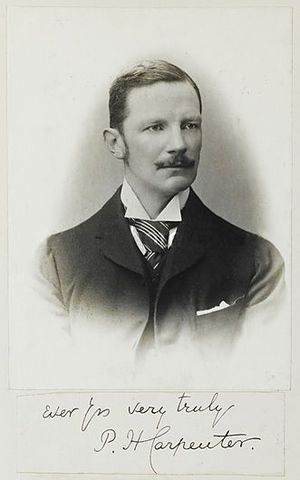Philip Herbert Carpenter facts for kids
Quick facts for kids
Philip Herbert Carpenter
|
|
|---|---|
 |
|
| Born | 6 February 1852 London, England
|
| Died | 21 October 1891 (aged 39) Eton College, England
|
| Alma mater |
|
| Occupation | naturalist and crinoid authority |
| Years active | 1874–1891 |
| Title |
|
| Parent(s) | William Benjamin Carpenter, Louisa Powell (1840–1885) |
| Relatives | Philip Pearsall Carpenter (uncle)) Russell Lant Carpenter (uncle) Mary Carpenter (Aunt) |
| Awards | Lyell Fund (1881) |
Philip Herbert Carpenter (born February 6, 1852 – died October 21, 1891) was a British naturalist. He was an expert on sea creatures called crinoids. He was also a Fellow of the Royal Society (FRS), a very important group for scientists. Philip was the fourth son of William Benjamin Carpenter, who was also a famous scientist.
Contents
Early Life and Education
Philip Carpenter went to University College School in London. After that, he studied at University College. Later, he became a top student at Trinity College, Cambridge. He finished his studies there in 1874.
Exploring the Deep Sea
Philip was part of the science teams on special ships. These ships explored the deep parts of the ocean. He joined the H.M.S. Lightning expedition from 1868 to 1869. He also worked on the H.M.S. Porcupine from 1869 to 1870.
In 1875, he became an assistant naturalist on H.M.S. Valorous. This ship went with Admiral Sir George Strong Nares on an Arctic trip. They traveled to Disco Island and explored Davis Strait. During the summer, they used special tools to measure the depth of the ocean. They also collected samples from the seabed.
Studying Crinoids
After a big expedition by H.M.S. Challenger (1872–1876), Philip was asked to study the crinoids they found. Crinoids are marine animals. They look a bit like plants, with a stalk and feathery arms. They are sometimes called "sea lilies" or "feather stars."
Carpenter was an expert on how these animals are built. He studied both living crinoids and those found as fossils. His work helped scientists understand these unique creatures better.
Awards and Recognition
In 1883, Philip Carpenter received the Lyell Fund. This award came from the Geological Society of London. It recognized the important scientific work he had done. Two years later, in 1885, he was chosen to be a Fellow of the Royal Society. This is a great honor for scientists in Britain.
Family Life
On April 19, 1879, Philip Carpenter married Caroline Emma Hale. Her father, Edward Hale, was a teacher at Eton College. Philip and Caroline had five sons together. Philip Carpenter later became a Science Master at Eton College. He passed away there in 1891.

